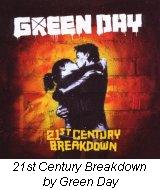This could be the most boring information about drumming that you’ll ever read. I thought about building a goofy story around reading drum music but I think you’ll appreciate going straight through the information without distraction. You’ll have a better chance of being a successful drummer if you can read music. And this information is a great start for learning to read drum music. After reading this section and the next one, you’ll be able to read and play the following drum beat.

The Key Parts
Drum music notation is similar to other instrumental music except that notes on the page represent drums and cymbals instead of tones on an instrument. For example, a C note in violin or piano music represents the snare drum on drum music. Also, a small “x” represents a cymbal note in drum music but means something different in piano music.
We’re going to focus on the following parts of drum notation to get started reading music:
- The staff. The lines upon which notes are placed.
- Measure or “bar” lines. This is the way music is divided into many mini-sections.
- The neutral clef. Indicates that the music is for drums and not for piano, violin, saxophone or the bass guitar.
- The time signature. This indicates the number of beats within each measure and the note that gets one beat.
- The tempo marking. This indicates how fast the music is played.
The Staff
Pretty simple: The staff is made up of the lines on a page upon which notes are placed. Notes are placed on the lines and between the lines.

Measure or Bar Lines:
Music is divided into mini-sections called measures. Another name for a measure is a bar. “Bar” and “measure” mean the same thing. Bar lines mark the end of one measure and the beginning of another measure. There is not a bar line at the beginning of a song.

Neutral Clef:
The clef at the beginning of a song indicates how to translate the music on the page. A treble clef, for example, indicates the music is written for a piano or violin. A neutral clef indicates that the staff lines are used to represent instruments without pitch, like drums and cymbals.

Time Signature:
The time signature consists of two numbers that look like a fraction. The top number is the number of beats in each measure. The bottom number is the type of note that gets one count. For example, 4/4 time has 4 beats in a measure and each quarter note (1/4) gets one beat. We’ll cover the definition of a quarter note in the next post.

Most rock songs have a time signature of 4/4. There are exceptions, like “Money” from Pink Floyd which is in 7/4. “A Change of Seasons” by Dream Theater has a number of time signatures. Try dancing to that song! Many slow blues songs are in 12/8, which means there are 12 beats to a measure and each eighth note (1/8) gets one count. You may hear other musicians refer to “odd time signatures” which means that it’s not 4/4 or 12/8.
 Tempo Marking:
Tempo Marking:
The tempo marking is usually above the staff at the beginning of the song. It shows the note value and the number of times that note gets counted in one minute. This is known as beats per minute (BPM). In the example below, 120 quarter notes get counted in one minute. That’s a rate of 2 quarter notes every second. One measure in 4/4 time would take 2 seconds to play (4 quarter notes in one measure). As a point of reference, “Know Your Enemy” from the Green Day album 21st Century Breakdown is a little faster than 120 beats per minute.

You now know the basic parts of drum music notation. In the next section you’ll learn how different drums are represented on the staff and the time value of each note. This was the least interesting part of learning to read drum music so I hope it wasn’t too boring!
